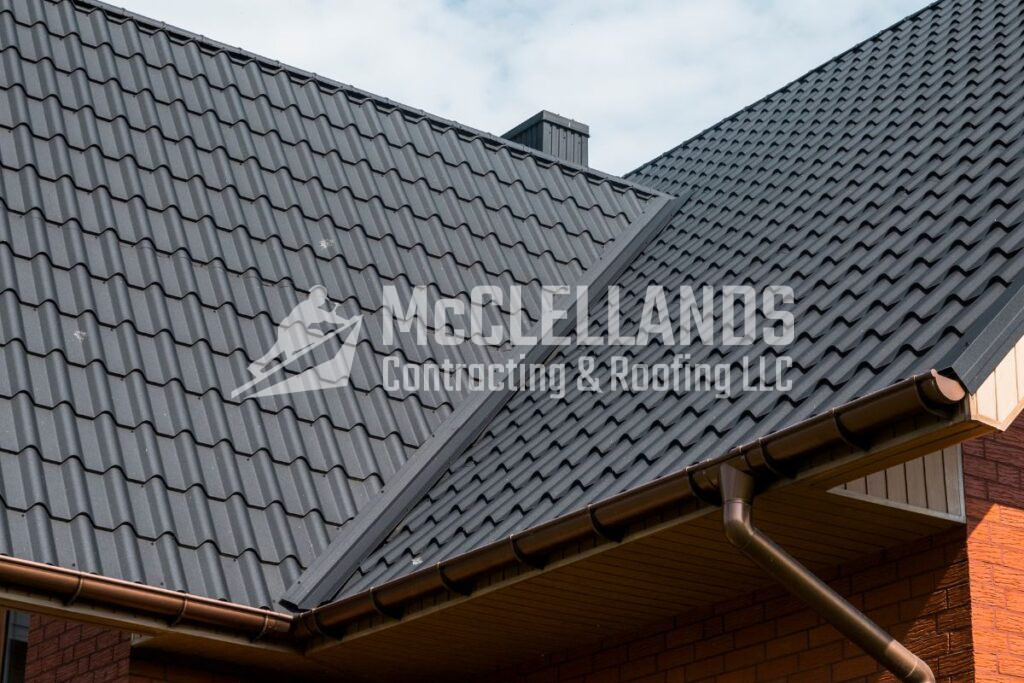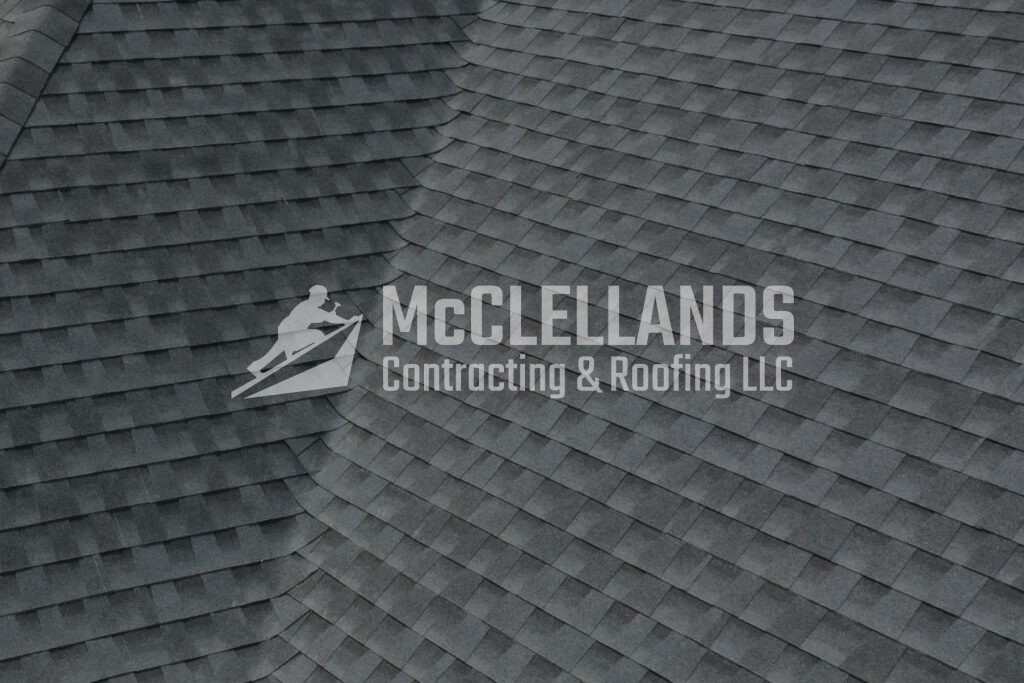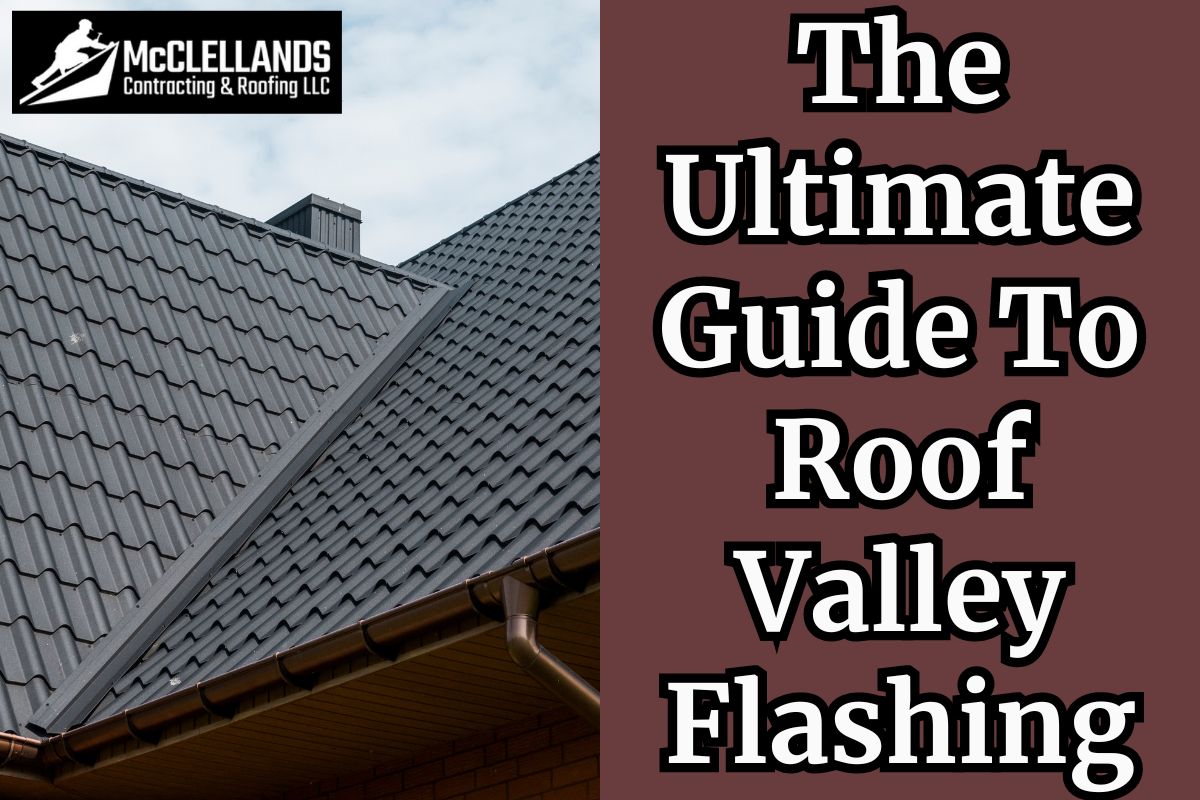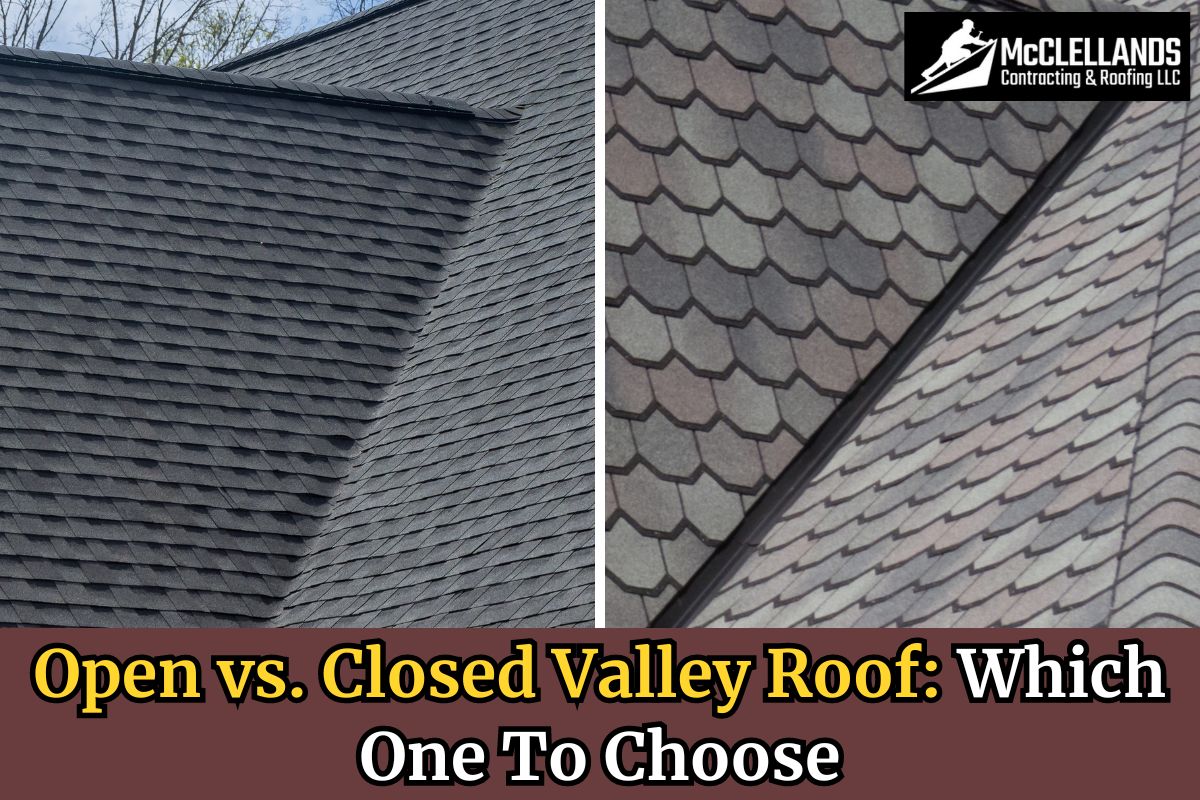While you may not know about this part of your roof, roof valley flashing plays a huge role in preventing water damage. The main role of a roof valley is to channel the water from your roof and prevent water ponding. And within a roof valley, there is a metal or plastic sheet that protects your roof.
At McClellands Contracting and Roofing, we aim to guide homeowners through the different elements of their homes. In this complete guide, we will cover everything about roof valley flashing.
What Is The Role Of Roof Valley Flashing?
Roof valley flashing is a specially designed material, typically made of metal, installed in roof valleys to direct water away from the roof and into the gutters. It acts as a waterproof barrier that prevents water from seeping beneath the roofing materials and into the underlying structure.
What Are The Types Of Roof Valleys Available?
Now that you know the role of roof valley flashing, let’s have a quick look at the different types of roof valleys:
#1 Open Valley

An open valley exposes the flashing underneath the roofing material. The roofing materials are cut back, revealing a clear channel for water to flow directly into gutters. It's efficient for drainage and can be visually striking.
Open valleys excel in quickly shedding water, which is great for rainy areas. However, they may collect debris more easily and require regular cleaning. Despite this, many roofers prefer open valleys for their superior water-shedding abilities and ease of maintenance when kept clean.
#2 Closed Valley

Unlike open valleys, a closed valley conceals the roof valley flashing under the shingles or roofing material. Water flows over the shingles before entering the gutters. This design helps prevent debris accumulation and offers a uniform appearance across the roof. It's particularly suitable for areas with less rainfall or where aesthetics are a priority.
While water drainage might be slightly less efficient than open valleys, closed valleys provide better protection against wind-driven rain and are less prone to debris-related issues.
Also Read: Open vs Closed Valley Roof: Which One To Choose
#3 California Roof Valley
A California roof valley is similar to a closed valley as the flashing material is installed underneath the roofing material. The main difference, however, is the installation process. For a California roof valley, shingles from one roof surface are installed over the valley and are used as the basis for the shingle installation on the other roof surface.
California valleys are great for areas with heavy rain or roofs with steep slopes. They can handle more water without overflowing, which helps protect your home from leaks. While they might cost a bit more to install, many homeowners like how they look and how well they work.
What Are The Different Flashing Materials Used In Valleys?
The materials used for roof valley flashing vary, and it is important to know your options to choose what is best for your roof. Here’s a brief overview of the most common materials:
#1 Metal
Metal is a common choice for roof valley flashing. There are many different metal options available, like galvanized steel, copper, and aluminum. Each has its own strengths and weaknesses. Here, we have listed the pros and cons of different metal flashing for a roof valley.
I. Steel
| Pros | Cons |
| Steel is strong and can withstand tough weather conditions. | Steel is heavier than aluminum and may require additional structural support. |
| Galvanized steel is generally a more affordable option than aluminum and copper roof valley flashing. | Without proper galvanization or coating, steel can rust over time. |
| It has a long lifespan, and you can paint it to match the color of your roof. | It can be more challenging to work with due to its rigidity. |
II. Copper
| Pros | Cons |
| Copper changes color over time due to its patina, which many homeowners like. | Copper is generally the most expensive option for roof valley flashing. |
| Copper roof valley flashing is very tough and can last anywhere between 50-100 years. | When exposed to frequent temperature changes, copper can contract and expand more than other metals. |
| It can withstand extreme climatic conditions. | |
| Copper doesn’t require regular coating. |
III. Aluminum
| Pros | Cons |
| Aluminum is a lightweight metal that is suitable for most buildings. | While strong, aluminum is not as durable as steel or copper and may be more susceptible to damage from impacts or heavy debris. |
| Aluminum roof valley flashing is not susceptible to rust or corrosion. | Some homeowners don’t like the appearance of aluminum roof valley flashing. |
| Aluminum roof valley flashing is more affordable than copper and comparable to steel. |
#2 Plastic
Plastic roof valley flashing is made from PVC or similar materials. It is one of the best choices for regions with mild climatic conditions.
It’s lighter and more affordable than metal roof valley flashing. Plastic flashing is good at keeping water out, has a long lifespan, and doesn't rust or corrode like some metals can.
However, it might not be as strong as metal in harsh weather.
#3 Rubber
Rubber roof valley flashing is also known as EPDM flashing. It is made from man-made rubber.
Rubber flashing is flexible, which makes it easy to install on roofs. It effectively prevents water from seeping into the other roofing materials.
Rubber roof valley flashing can stretch and move with the roof during temperature changes, which helps prevent cracks or gaps. Rubber flashing works well in both hot and cold climates. It's a bit more expensive than plastic but can last for many years.
How To Choose The Right Roof Valley Flashing For Your Roof
Choosing the right type of roof valley flashing is not a science, but you’ll need to consider a few things while choosing one for your roof!
- Look at your roof type and local weather. For harsh climates, metal like steel or copper works best. In milder areas, aluminum or plastic can be good choices.
- For rainy areas, focus on water resistance - rubber flashing is great for this.
- If you live where it snows a lot, pick a strong material like steel.
- Think about your budget. Copper is pricey but lasts long, while aluminum is cheaper but may need replacing sooner.
- Match the flashing to your roof color for a cohesive look.
- Also, check local building codes - some places have specific requirements.
- If you're not sure, ask a roofing expert. They can look at your roof and suggest the best flashing for your needs and budget.
Call McClellands Contracting and Roofing For Your Roof Installation in Pittsburgh, PA
Choosing a reliable roofing partner is important to ensure faultless roofing services. If you are looking for trustworthy roof installation services in Pittsburgh, PA, or the nearby areas, we are here to assist you.
Our skilled roofers have years of experience handling different types of roofing systems, including asphalt shingles and metal roofs. Our team stays up-to-date with the latest roofing technologies and techniques.
We offer free inspections and estimates, and we're fully licensed and insured for your peace of mind. Whether you need a new roof, repairs, or maintenance, we're committed to delivering top-quality service and results that exceed your expectations. To know more about our services, feel free to call us at (412) 353-5660.



